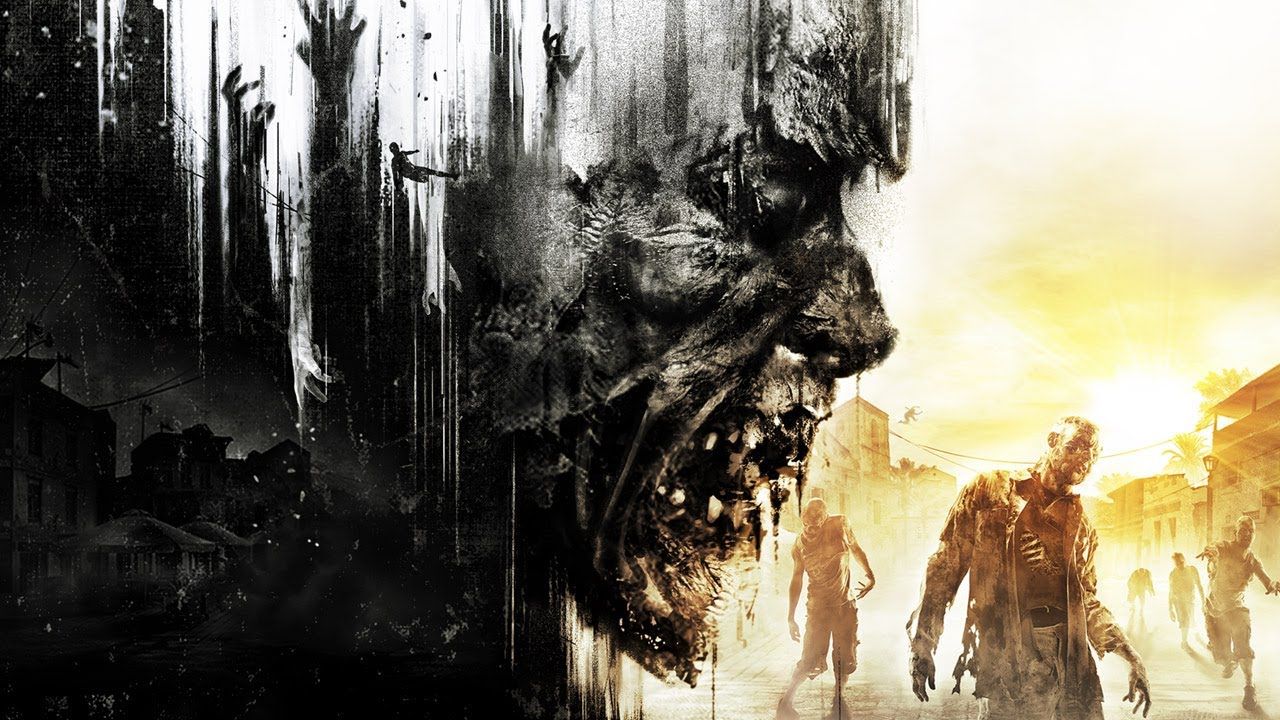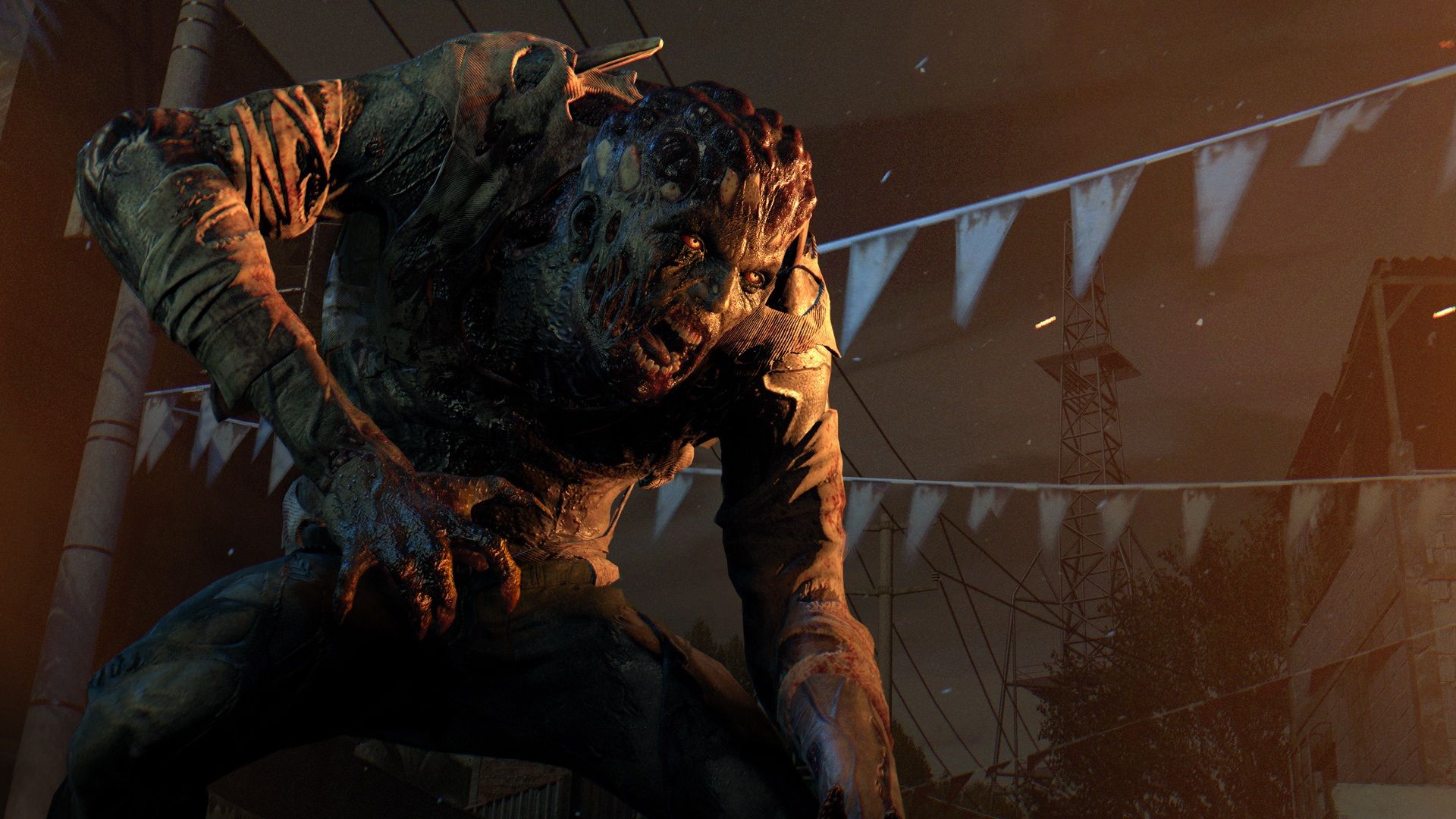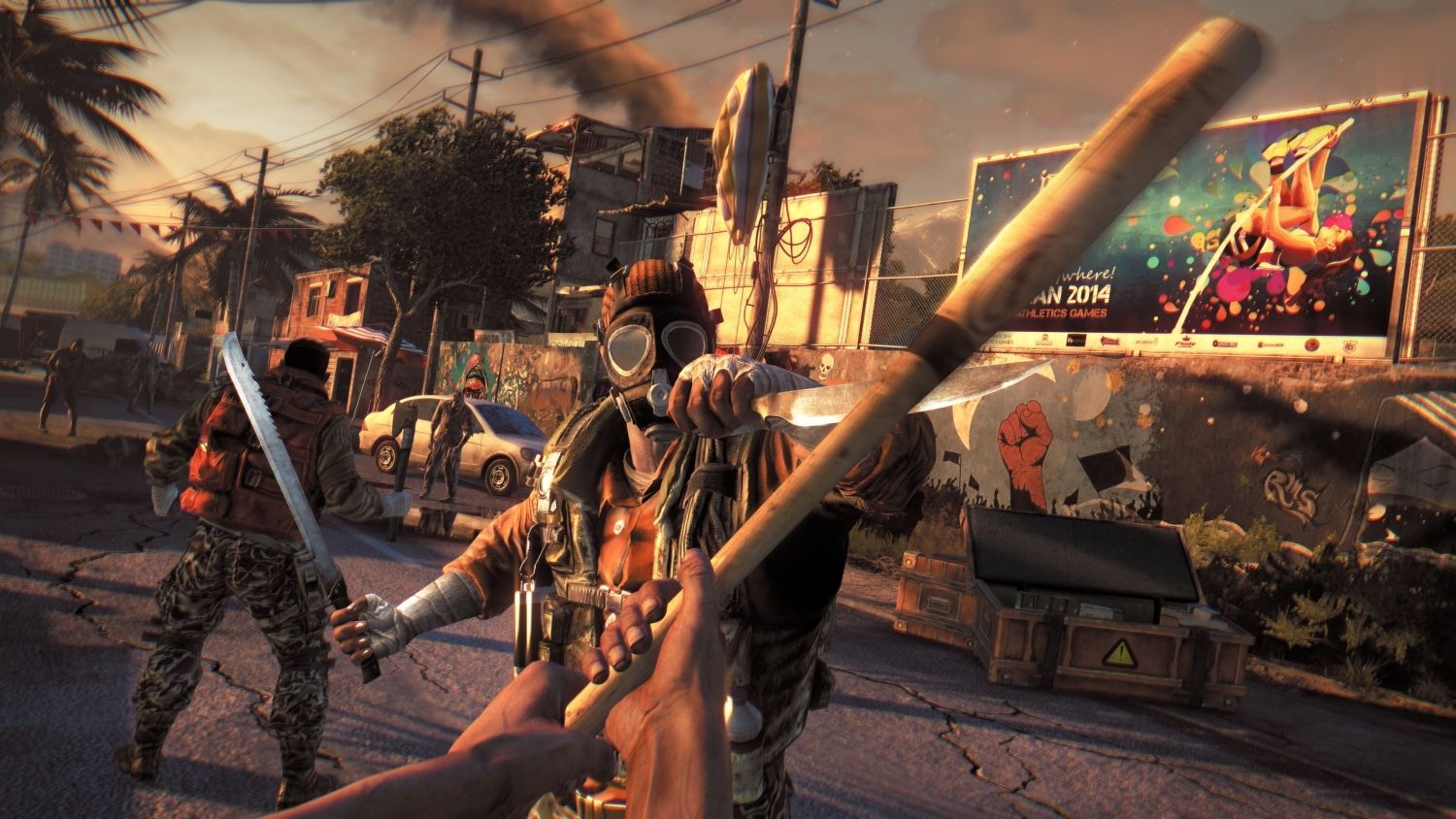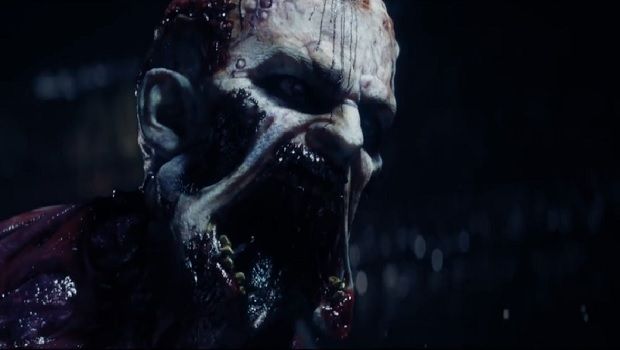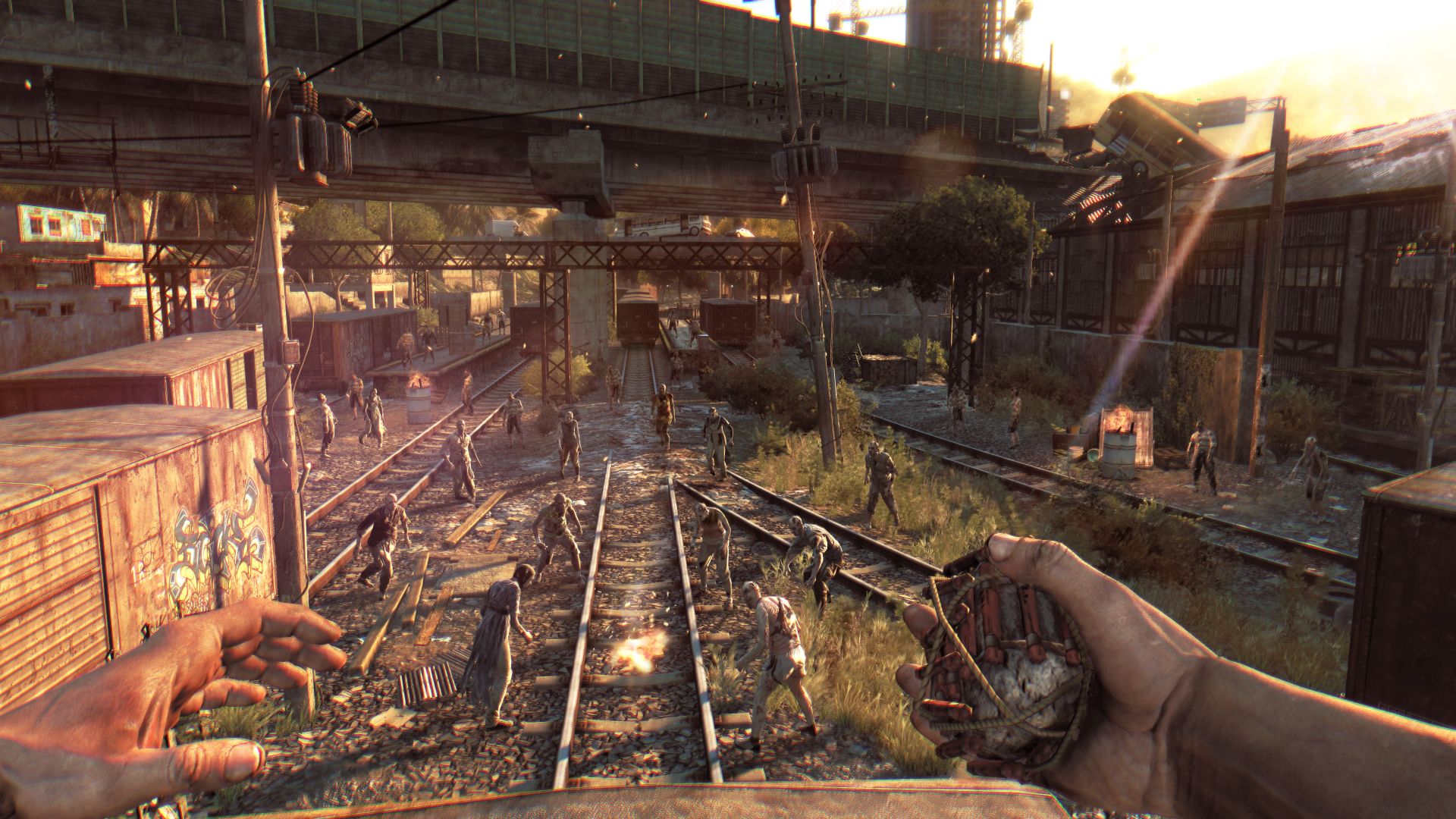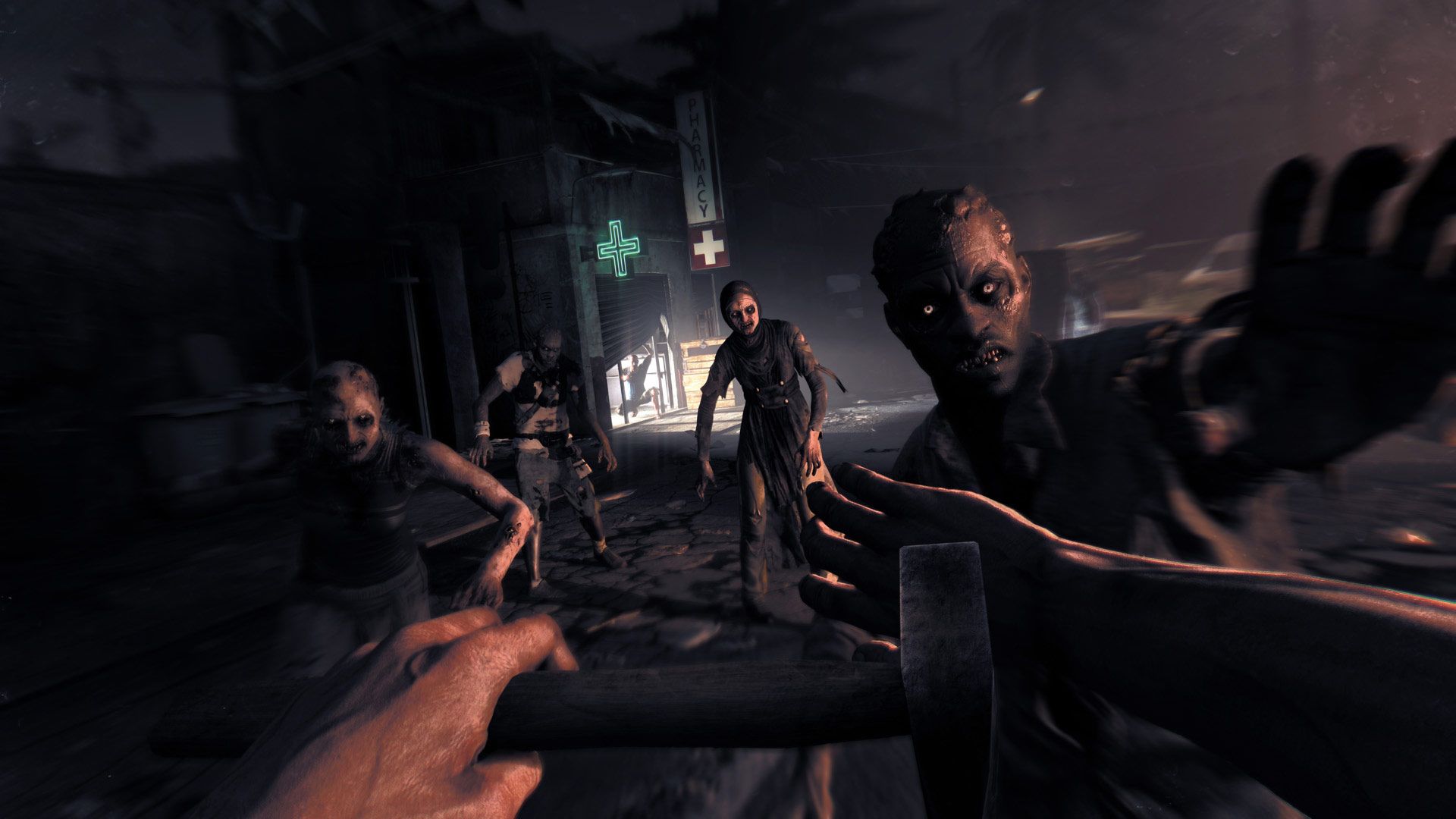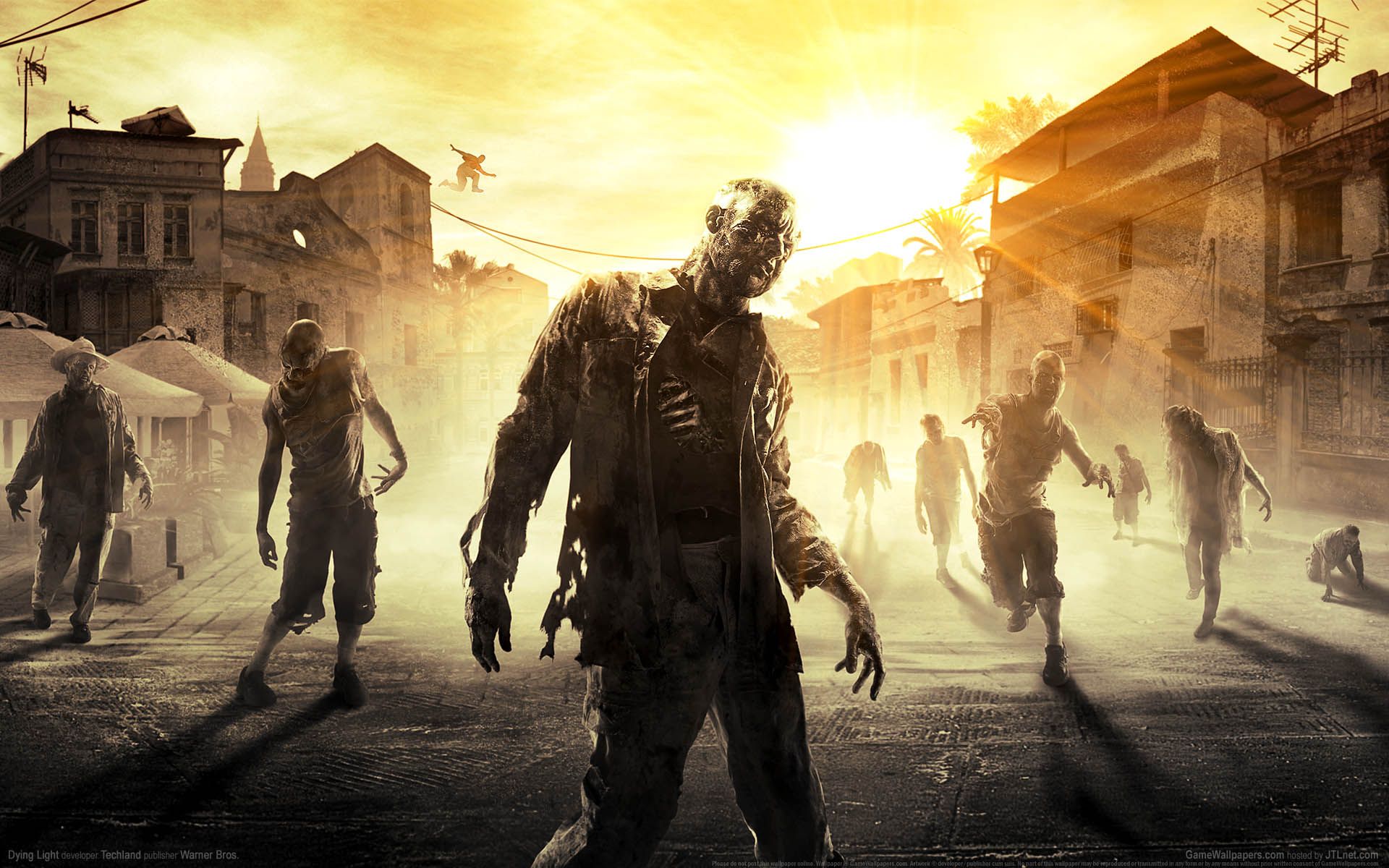As more and more zombie-survival and zombie-focused titles are huddling together, the genre has almost become a reflection of itself: shambling and worn-out, yet the hordes of titles with some variation on "dead" in the title just keep on coming.
Though many titles within the past decade, like Left 4 Dead, Call of Duty's various zombie modes, Day Z, The Last of Us, and more have been some of the most popular titles to have players hack away at the end dead, finding ways to keep the dead fresh (already difficult due to the smell alone, I'm sure) is much easier said than done.
This all makes Dying Light a more curious entry in the zombie canon. It ticks off all the usual boxes of what's in a zombie-centric game -- horribly ravaged environments, a loss of hope, humans struggling for survival.
However, it adds in plenty of unexplored elements to the genre like parkour and radical movement, much like how Titanfall and Call of Duty: Advanced Warfare brought in new ways to think of movement in first-person shooters.
Players are put into the role of Kyle Crane, a contracted mercenary sent to the zombie-infested city of Harran looking to seek out crucial (and confidential) information within its walls.
Unlike titles like The Walking Dead or The Last of Us, where players were given a brief glimpse (or extended look) at the beginning of the zombie apocalypse, this title instead plants players right in the middle of the apocalypse after already happening: instead, several months have passed in Harran's zombie timeline, and it shows around every corner of the ravaged city.
Fires, abandoned buildings, quarantined zones and more are littered throughout what remains of Harran, and ultimately it is left to the player to decide where to go, how to accomplish tasks, and most of all, figure out the best way to survive.
Overall gameplay proceeds as a first-person action-adventure game heavily focused around melee combat, some occasional bouts of gunplay, but most importantly, a focus on using Kyle Crane's (quickly obtained) skills in parkour and traversal to get around the many buildings, fences, and other environmental obstacles of Harran.
Able to scale buildings quickly, leap over objects, vault, climb, and more, Dying Light's key component is constant movement; when faced with hordes of zombies, running and looking for an escape is often the far more viable solution than taking on eight walkers at a time, hand-to-hand.
Movement is survival in this title rather than brute strength, letting Kyle perform plenty of acrobatic feats and tricks to prevent becoming one among the many hordes of zombies, such as vaulting over incoming zombies, performing all kinds of punches and evasion moves, and my personal favorite, a dropkick that can send walkers reeling, whether it's into a spiked trap, over a building, or into other walkers.
More impressively, the much touted parkour system succeeds in making players still vulnerable to the dangers of zombies, but also versatile and mobile in ways that not many other zombie titles have been able to accomplish, whether it's outrunning zombies or finding a nifty escape route that makes players feel clever instead of struggling to escape from an onslaught of enemies.
The title of Dying Light also provides the game's other key gameplay component through its ever-changing day/night cycle, which shifts throughout the player's traversals in Harran.
Generally, players look to accomplish missions, gather supplies, and seek out further activities during the daytime when stakes are relatively low; the zombies move slower and are less harmful, making for an easier time completing tasks.
However, once the sun sets and the night begins to creep in, players are faced with a much more intimidating obstacle in the form of more powerful zombies, a more difficult environment to traverse, and the biggest threat being the Volatiles: a group of super-powered, highly-skilled zombies only seen at night -- the game's biggest rush of heart-pounding, intense moments.
Able to scale buildings, see in the dark, and rip players to shreds, the Volatiles easily provide the night's most imminent threats. They also play heavily into the risk-and-reward system that the day and night cycle provides.
While night time leads to dangerous encounters with the Volatiles and other deadly creatures, players do gain some added perks from staying out past sunset, such as double the experience from a survived encounter, alongside boosted agility and jumping.
In these instances, Dying Light's most promising aspect, a focus on survival and whether to take the risk in exchange for rewards, shines brilliantly. As much as facing a horde of Volatiles is both terrifying and basically a suicide mission, nabbing extra bonuses and experience for a safe escape can be equally tempting.
Deciding whether to always make it back to a safehouse before night falls or risking a venture into the night for extra supplies and experience you may not be able to obtain regularly plays well into the game's strong focus on survival.
Both options are totally viable, with their own set of pros and cons to go along with them, but ultimately the title doesn't hold your hand here. Instead, it hands you an axe or worn-out hammer and tells you "good luck."
Following Polish developer Techland's previous entry in to the zombie genre, Dead Island, those that have played the original title will definitely find much of Dying Light's imprint still planted firmly in the roots of the Dead Island series, as much as Techland's latest title tries to (and mostly succeeds in) carrying its own weight.
Focused heavily on melee combat, the core combat and gameplay take much inspiration and style from that of Dead Island, with easily-breakable weapons, crafting, and more, alongside other elements of similarly-action focused titles, with comparisons that can also be drawn to EA's Mirror's Edge and Ubisoft's Far Cry series.
Despite the elements that some may be able to pick out from other games, like the parkour system being fairly reminiscent of Mirror's Edge and the scaling of tall towers to unlock new areas a la Far Cry, this title lengthy experience still manages to provide for itself, even with a few minor caveats.
Dying Light provides plenty of slick moves, intriguing ideas, and a beautifully-realized world: however, like a inopportunely-missed jump or a fall from a building to a horde of zombies below, the gameplay of Dying Light works incredibly well when it works -- other times though, it can come apart when it counts.
In particular, the parkour system, the very foundation which holds up most of the experience, does lend itself to moments of jankiness or imprecise measures, such as when I'd anticipate climbing onto a surface or landing a jump but falter due to the game incorrectly guessing what my inputs were.
Without clear indicators of what can and can't be climbed on, and especially given the terrifying acrobatics required of players in some sequences, certain aspects of the acrobatics are left to a leap of faith, an experience that can often be frustrating when dealing with the game's non-human enemies, and especially if that death results in the loss of Survivor Points (the game's experience points).
Likewise, while Dying Light encourages fight or flight heavily throughout its campaign, the "combat" portion of the game often makes "flight" the more appealing option in any scenario.
Filled with options of taking out zombies through either environmental hazards, distractions, or good old hand-to-hand combat, the game provides numerous routes of which players can complete a task. However, in some cases combat is the only option, and it can be brutal.
Compared to most other zombie-centric games, the zombies in Dying Light, even the lowly-leveled grunt walkers, can prove to be a challenge taking out, even with a well-armed stash of weapons or equipment. Without weapons, the task of clearing out zombies from an important goal or area to complete an objective can be an incredibly challenging and frustrating experience.
While for the most part it's refreshingly open in how to complete tasks, being presented with situations where you have to fight your way out can be a big challenge to take, especially if you lack the equipment (or even any weapons at all) to handle them.
Alongside the issues of combat, an inconsistency with explaining important game mechanics lead to numerous moments of either discovering concepts and ideas of how to play on my own, or worse, having to find out how to do certain things well after I needed to do them.
This shows particularly through some of the game's more secondary mechanics, such as crafting items, repairing equipment, item management, and character progression, all forced into the game's confusing menus that can take some time to figure out accurately.
Figuring out how to repair items and weapons proved to be a challenge alone without clear instruction on what weapons can be repaired with certain pickups, leading to some difficult to grasp concepts and mechanics that never feel fleshed out or explained incredibly well.
Dying Light gives a number of options and lots of content, yet most of that feels up to the player to discover, which can make figuring out how to effectively craft/upgrade gear, decide how to progress your character, and more a frustrating experience.
Dying Light, like most other open-world titles available today, promises a wealth of content to uncover, places to explore, and missions to do, of which it offers in great abundance. However, as much as it brings new types of movement and combat to the zombie genre, its mission design is very much the same.
While the game boasts a lengthy campaign between 15-20 hours (just through the game's story content), its mission design by and large remains repetitive, leaving players to embark on constant fetch quests for uninteresting characters.
In a post-Walking Dead and The Last of Us world that had characters which we cared of whether they lived or died, Dying Light doesn't quite hold the same water, instead leaving the player to largely go into areas, find an item/complete and objective, and bring it back to the original character because they didn't want to do it themselves.
While many of the missions hold some great setpieces and moments of action, the repetitive nature of the missions leads to numerous instances of "gotcha" moments, where one heading to an objective suddenly realizes that the item you were looking for is no longer then, sending you to another location to look for it again. This is compounded by the game's lack of a fast-travel system to ease the process.
Even though the plot generally excels in its grounded realism and attempt at being survival-oriented, much of the's story content feels uninteresting and padded -- not to mention cliched at some points -- making the game's 15-20 hour length feel much longer than it needed to be, and well beyond if you go the completionist route.
Having seen multiple variations of the well-worn zombie apocalypse trope now, especially in recent years, standing out from the crowd of hungry, flesh-eating corpses is no easy task.
Dying Light's "zombie parkour" action is an attribute that certainly makes it standout, even if in getting through the game many of its clunkier attributes show through, and many times leading to awkward combat encounters and at times poor mission design that results in failure too easily.
Despite its flaws, it's an enjoyable and still fresh experience, more than anything seen across the beautiful Middle East-inspired Harran that promises plenty to do, sights to see, and missions to complete.
It's combat and focus on a world torn apart by bands of the undead is nothing new, but Dying Light's daring acrobatics and focus on survival still make it an impressive feat -- it simply falters enough to stumble on its landing.

